五一劳动节英语介绍PPT
- 格式:pptx
- 大小:5.44 MB
- 文档页数:31
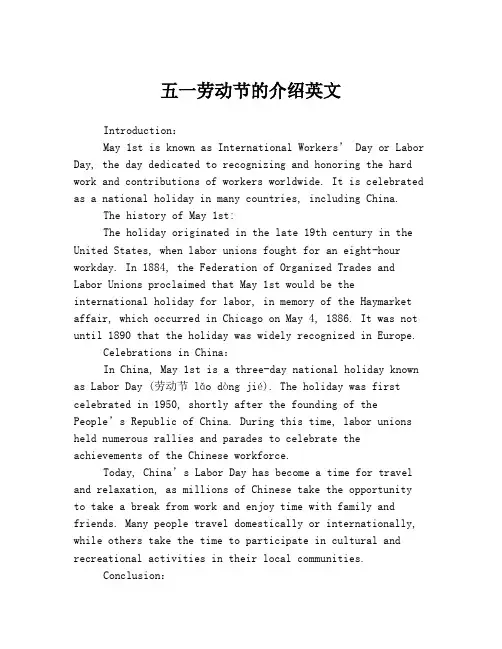
五一劳动节的介绍英文Introduction:May 1st is known as International Workers’ Day or Labor Day, the day dedicated to recognizing and honoring the hard work and contributions of workers worldwide. It is celebrated as a national holiday in many countries, including China.The history of May 1st:The holiday originated in the late 19th century in the United States, when labor unions fought for an eight-hour workday. In 1884, the Federation of Organized Trades and Labor Unions proclaimed that May 1st would be the international holiday for labor, in memory of the Haymarket affair, which occurred in Chicago on May 4, 1886. It was not until 1890 that the holiday was widely recognized in Europe.Celebrations in China:In China, May 1st is a three-day national holiday known as Labor Day (劳动节lǎo dòng jié). The holiday was first celebrated in 1950, shortly after the founding of the People’s Republic of China. During this time, labor unions held numerous rallies and parades to celebrate the achievements of the Chinese workforce.Today, China’s Labor Day has become a time for travel and relaxation, as millions of Chinese take the opportunityto take a break from work and enjoy time with family and friends. Many people travel domestically or internationally, while others take the time to participate in cultural and recreational activities in their local communities.Conclusion:Ultimately, May 1st is a day to celebrate the contributions of all workers, regardless of their industry or occupation. Whether we are celebrating the achievements of labor unions or simply taking a much-needed break from work, the holiday serves as a reminder of the importance anddignity of all forms of work.。
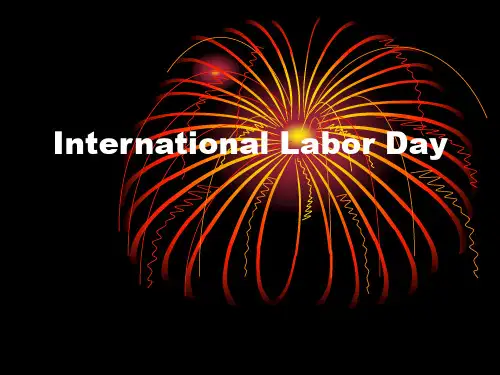


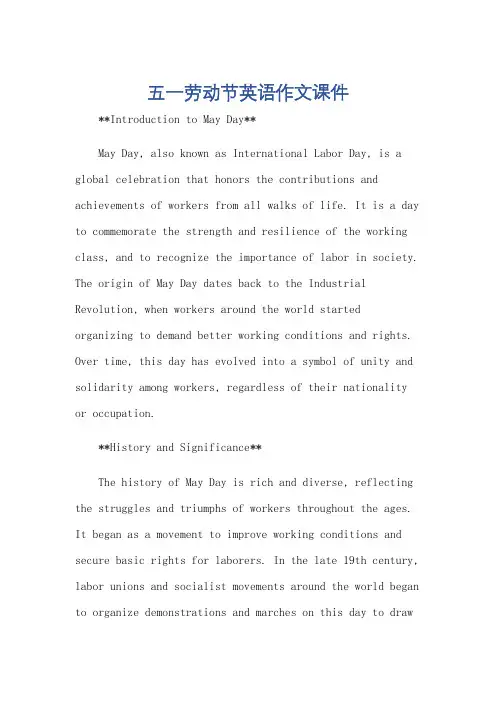
五一劳动节英语作文课件**Introduction to May Day**May Day, also known as International Labor Day, is a global celebration that honors the contributions and achievements of workers from all walks of life. It is a day to commemorate the strength and resilience of the working class, and to recognize the importance of labor in society. The origin of May Day dates back to the Industrial Revolution, when workers around the world started organizing to demand better working conditions and rights. Over time, this day has evolved into a symbol of unity and solidarity among workers, regardless of their nationality or occupation.**History and Significance**The history of May Day is rich and diverse, reflecting the struggles and triumphs of workers throughout the ages. It began as a movement to improve working conditions and secure basic rights for laborers. In the late 19th century, labor unions and socialist movements around the world began to organize demonstrations and marches on this day to drawattention to the plight of workers. These actions often faced opposition and repression, but they ultimately led to significant improvements in labor laws and worker protections.Today, May Day is celebrated in many countries with various cultural traditions and activities. Some countries observe it as a national holiday, with parades, concerts, and other public events. Others may have more muted celebrations, but the spirit of unity and appreciation for labor remains the same.**Importance of Labor**The significance of May Day lies in its recognition of the crucial role that labor plays in society. Workers are the backbone of any economy, responsible for producing the goods and services that sustain our way of life. Their efforts and contributions are often overlooked or undervalued, but May Day is a reminder that we should celebrate and honor their achievements.Moreover, May Day is a call to action. It serves as a reminder that workers must continue to organize and advocate for their rights, including fair wages, safeworking conditions, and equal treatment. It encourages us to appreciate the labor of others and to recognize that our own livelihoods are intimately tied to the labor of others. **Conclusion**In conclusion, May Day is a day to celebrate the contributions of workers and to reflect on the importance of labor in society. It is a symbol of unity and solidarity that transcends national boundaries and occupational divides. As we commemorate this special day, let us remember to honor the labor of all, and to continuestriving for a more just and equitable world.**五一劳动节介绍**五一劳动节,又称国际劳动节,是一个全球性的庆祝活动,旨在纪念各行各业劳动者的贡献和成就。

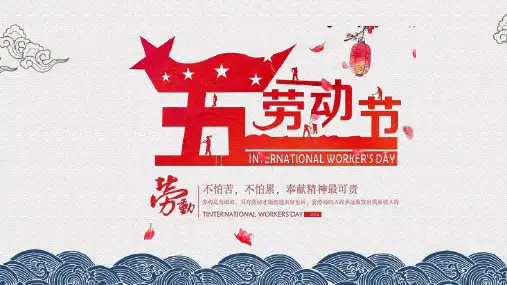
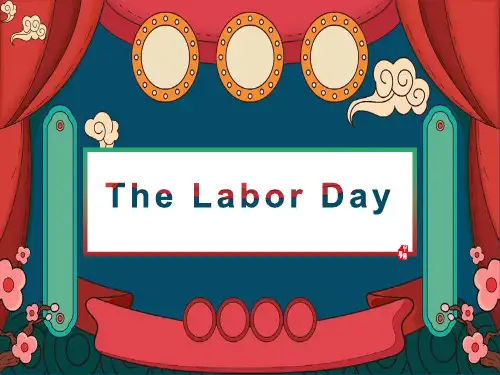

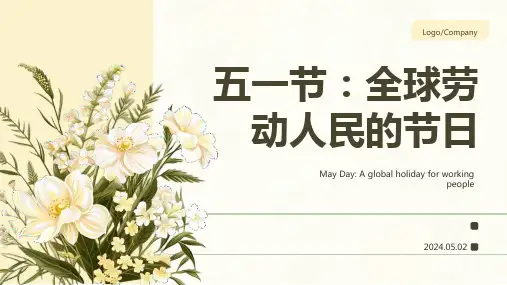
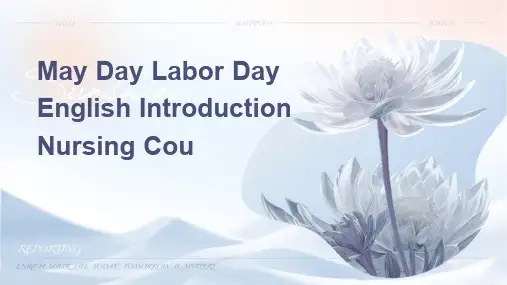
五一劳动节简介英语May Day, also known as International Workers' Day, is a holiday celebrated on May 1st each year. It is a day to recognize and honor the contributions of workers to society.The origins of May Day can be traced back to the late 19th century, when labor movements around the world began to advocate for better working conditions and higher wages. In 1886, workers in the United States organized a nationwide strike to demand an eight-hour workday. On May 1st of that year, thousands of workers in Chicago took to the streets to protest. The demonstration turned violent, and several people were killed. In the aftermath, the government arrested and executed several labor leaders, further fueling the labor movement.In 1889, the International Socialist Conference declared May 1st to be International Workers' Day in honor of the Chicago protests. Since then, the holiday has been celebrated around the world as a day to recognize the contributions of workers and to advocate for workers' rights.In many countries, May Day is a public holiday, and workers are given the day off. In some places, there are parades and demonstrations tocelebrate the holiday. In others, workers gather to discuss labor issues and to advocate for better working conditions.Overall, May Day is an important holiday for workers around the world. It serves as a reminder of the struggles and sacrifices that workers have made to improve their lives and the lives of others.。